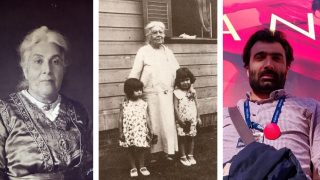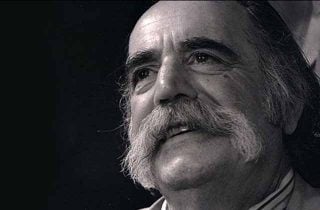
Mystery of disappeared statue
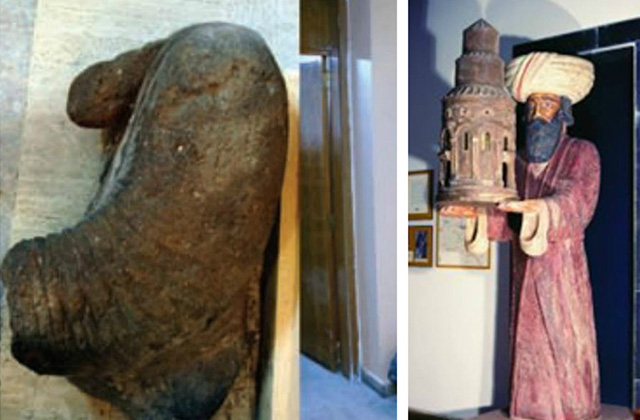
When prominent archeologist and orientalist Nikoghayos Mar for the first time together with Toros Toromanyan entered fabulous city Ani in 1904 and launched excavations, he knew that Ani has keep lots of secrets for him, and now, after the centuries’ silence they should come up from the dust of oblivion. However, even experienced Mar couldn’t have supposed that he was to uncover single finding.
During excavations of Gagkashen St. Gregory Church in 1906 the archeologists suddenly came across with an immense stone. Not much time was required to realize that it was something different than an exceptional sample if middle age sculpture. We call it exceptional, as it’s the only complete statue.
How great was happiness of the people present, when it turned out that it was the statue of Bagratuni King Gagik A. The statue with the height of 2.26 meters, from rose tuff, to all probabilities was placed on the northern wall of the Church and fell from there after Ani’s ruining. As Mar, Toromanyan and Hovsep Orbeli described in their works, King Gagik was figured with open arms, only already crashed (only the lower part has been preserved). More interesting is the fact that the statue was painted: white robe with red tuga on and luxurious turban on the head. The beard, the mustache and eyebrows have also been painted. He had a cross pendant on his neck.
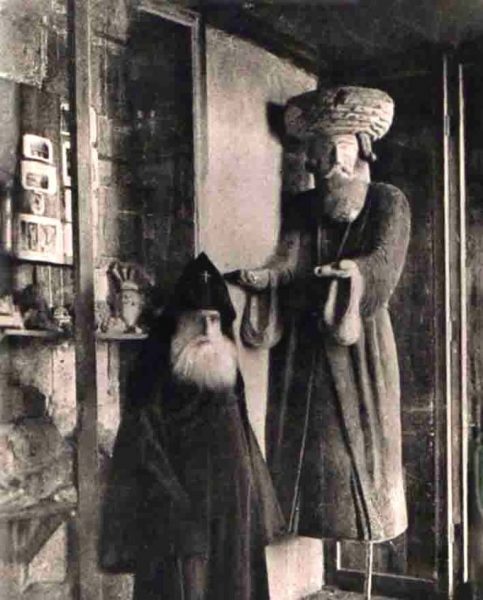
Catholicos Matthew II Izmirlian next to the statue of King Gagik
The news on uncovering spread rather quickly. People were hurrying from Tbilisi, Yerevan, Etchmiadzin, Alexandropol to Ani to see the newfound miracle. There were numerous prominent intellectuals, political and state figures. To satisfy the demands for unprecedented flow, a museum is being organized on the site, where all the valuable items uncovered during the excavations are being gathered, and central role was assumed to the statue of great Armenian king.
25 June 1909 Matthew II Izmirlian arrives in Ani with well-known philologist Minas Tcheraz. He observes the statue, and then famous actor and photographer Aram Vruyr takes a photo of His Holiness with King Gagik. This was fatal opportunity, as currently one of the preserved single and most successful photos of the statue is exactly that one. (By the way, it should also be stated that pursuant some sources the statue was found by Aram Vruyr, although it’s not a proved hypothesis).
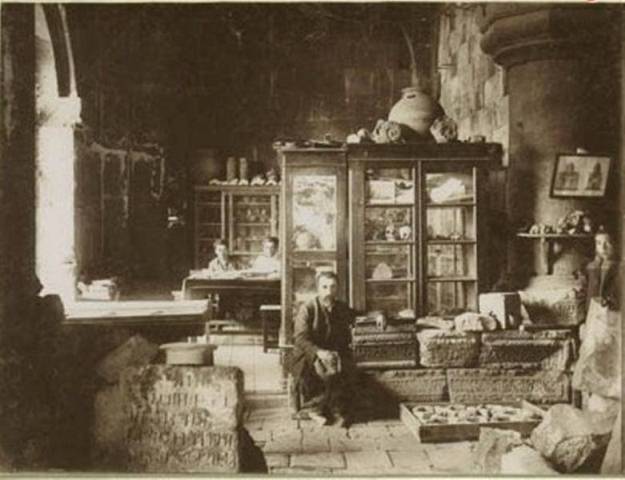
Architect Toros Toromanyan in Ani Museum
Excavations and reserches of Ani were progressing, however, in the beginning of WWI all those programs vanished. In the forthcoming years the situation is becoming more than complicated. In 1918 when news was spread that Turkish troops were approaching Ani, the condition became fatal. City’s treasures, invaluable cultural values were to be saved. During those days, when in the war turmoil very few people were concerned about the fate of archeological findings, Mar, Orbeli and Ashkharhabek Kalantar set an alarm, calling to devoted and bothering people. Fortunately, their calls don’t remain without reflection.
A group of young patriots immediately head for Ani. After a short consultation with archeologists a decision is made to move all the findings to the opposite bank of Akhuryan River. Everything that was possible to take out from Ani is being transported through a handmade raft.
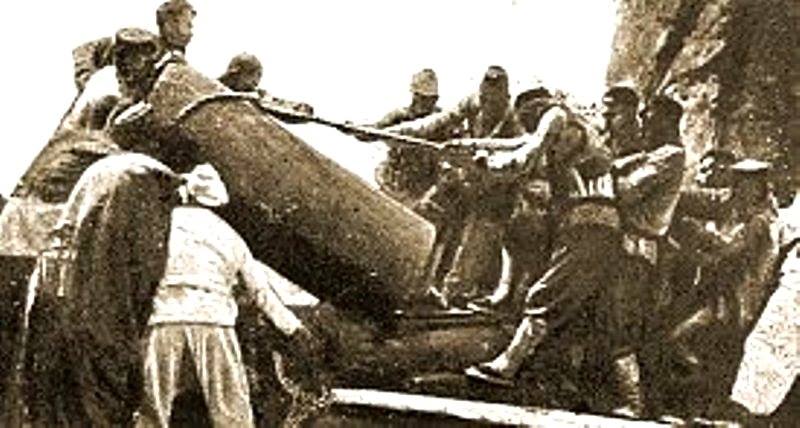
Transportation of archeological findings in Ani
Then the turn was of King Gagik’s statue. And here young people face insurmountable difficulty. It turns out that it’s rather heavy and it’s impossible to transport through a raft. The threat of statue’s appearing under the water on the one hand, and approaching Turkish battalions on the other, didn’t allow undertaking extra measures. It was already clear, that in that part each move of the young people wouldn’t be unnoticed.
That time perhaps the most reasonable decision is being made: hide the statue of King Gagik in a safe place, under the ground, and wait until safer times will arrive. So they did. (In H.Orbeli’s work a note was provided by the editorial, according to which “King Gagik’s statue was buried under the ground in the condition of advancement of Turkish troops.”)
However, unfortunately, safe and favorable times didn’t come, and the statue remained in its unknown hiding place. With time last eyewitnesses and bearers of the secret died. Instead a new legend was born—the legend of King Gagik’s statue. Where is it? What was its destiny? These two questions have been touched upon for decades and any new information more thickened the veil of already thick mystery.
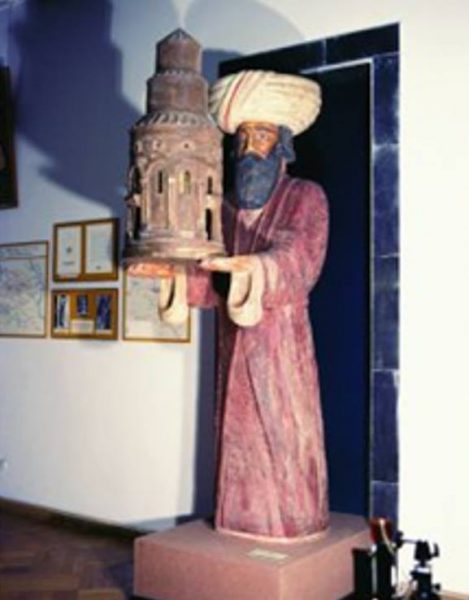
King Gagik’s statue’s duplicate, recovered by painter S.Poltoratski
Decades ago an article was published, the author of which was claiming that head of the statue was moved by Ashkharhabek Kalantar to Sanahin Monastery in 1918 (Atcheyan H., Ani City presently, “Monthly journal,” January-February 1924, pp 49-50). However, until this day there is no any proof to it. Instead, the opinion was circulating, that at the last moment archeologists hid the statue in the caves of Ani.
It should be noted that besides external Ani, there was also, the so-called “underground Ani.”
There are miscellaneous legends and traditions about it. Those underground holes and caves are called “Gedan geymaz,” which literally means “the one who leaves, will never come back.”
The story tells that 29 July 1901 a group of railway engineers visited Ani, headed by Ivan Panov. Thus, these people decide to clarify how real talks about real caves are. By special equipment and acetylene headlights they entered the underground holes, overcame 960 meter distance and appeared in the last big hall, which again had branching. It’s not excluded though, that experienced archeologists, who knew about the existence of the caves, could have chosen it as the most reliable hiding place. However, this is only an assumption.
This long period of expectations and searches was once suspended in 1994, when Georgian archeologist G.Kavtaradze stated that one part of King Gagik he found in Erzurum Museum. According to that information, the maintained part was demonstrated in the Museum without an explanatory note. However, this can’t be observed as full proof and there is no any valuable argument proving credibility of its origin.

Fragment of the statue in Erzurum Museum
Seemingly, one should get along with the idea of losing the statue. However, fortunately, it’s not so. There is credible information that today proper place of the statue is known to Armenian archeologists. It’s mapped, and as elder specialists edify, that information is being passed on from generation to generation. Simply it shouldn’t be published out of known reasons. They say that the secret will be uncovered only in case, when it’ll be possible to implement excavations in Ani under the assistance of UNESCO, with the participation of Armenia and conditioned that the statue will be transported to our country. Let us hope and wait with them.
By Hovik Charkhchyan






